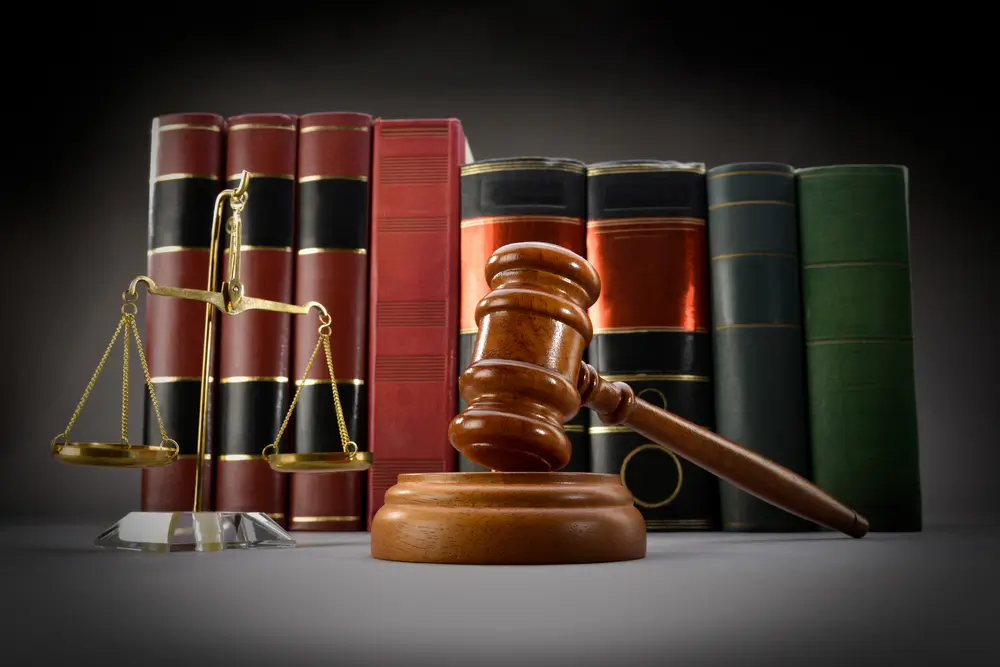The SARFAESI Act full form is – “Securitization and Reconstruction of Financial Assets and Enforcement of Security Interest Act”. The SARFAESI Act allows banks and other financial institutions for auctioning commercial or residential properties to recover a loan when a borrower fails to repay the loan amount. Thus, the SARFAESI Act, 2002 enables banks to reduce their non-performing assets through recovery methods and reconstruction.
The SARFAESI Act provides that banks can seize the property of a borrower without going to court except for agricultural land. SARFAESI Act, 2002 is applicable only in the cases of secured loans where banks can enforce underlying securities such as hypothecation, mortgage, pledge etc. An order from the court is not required unless the security is invalid or fraudulent. In the case of unsecured assets, the bank would have to go to court and file a civil case against the defaulters.
Salient features of SARFAESI Act
The long title of the Act, as amended in 2016 (w.e.f. 1-9-2016) reads as follows –
(a) Regulate Securitisation and Reconstruction of Financial Assets
(b) Enforcement of Security Interest
(c) Provide for Central Database of security interest created on property rights
These three provisions are independent of each other in many aspects.
The Act is really ‘three in one’ Act. The Act makes provisions for following –
(a) Enforcement of security interest (which is most important part of the Act)
(b) Securitisation
(c) Asset reconstruction
Salient features of these provisions (which are independent of each other in many aspects) are summarized below.
Enforcement of Security Interest
The highlights are as follows :
-
- One very important aspect of the Act is that a secured creditor (Bank/FI) can enforce the security directly, without intervention of Court or Tribunal, after giving 60 days notice. [section 13(2) of SARFAESI Act].
- Borrower can make representation or take objection and secured creditor can consider and either accept or reject the same [section 13(3A) of SARFAESI Act]
- If borrower does not pay the principal and interest as specified in the notice within 60 days, the secured creditor can take possession of assets, take over management of assets, appoint any person to manage the assets etc. [section 13(4) of SARFAESI Act].
- This power can be exercised only if the asset is ‘Non-Performing Asset’ as per guidelines prescribed by RBI or other regulatory authority.
- The secured creditor can sell the assets. If dues are not fully recovered, he can file application with Debt Recovery Tribunal for balance amount. He can also proceed against guarantors or sale the pledged assets directly. [section 13(11) of SARFAESI Act].
- Instead of Bank/FI itself taking possession and selling the asset, the Bank/FI can hand over the asset to Asset Reconstruction Company. That Asset Reconstruction Company will then enter the shoes of Bank/FI and can act as if it is a ‘secured creditor’. However, handing over asset to Asset Reconstruction Company is at option of Bank/FI.
- Application can be filed by borrower with Debt Recovery Tribunal (DRT) along with prescribed fees, only after the asset or management is taken over and not at the stage of receiving notice from secured creditor. [section 17(1) of SARFAESI Act].
- Jurisdiction of Civil Court has been completely barred [section 34 of SARFAESI Act]. [Of course, writ petition can be filed with High Court at any time].
- Appeal from order of DRT lies with Debt Recovery Appellate Tribunal [DRAT]. [section 18(1) of SARFAESI Act].
- If borrower succeeds in appeal (at DRT or DRAT), he is entitled to get back possession of asset plus compensation and costs as may be fixed by DRT or Appellate Tribunal. [section 19 of SARFAESI Act]. Thus, he is entitled to only ‘compensation’ and not ‘damages’.
Securitisation
The highlights are as follows :
-
- In layman’s terms, ‘securitisation’ means sale and purchase of pooled (bundled) secured assets.
- Securitisation can be of good assets and even future assets. However, SARFAESI Act makes provisions only in respect of distressed assets i.e. stressed assets.
- The basic idea is to form an independent ‘Asset Reconstruction Company’ such company will have to be registered with RBI. [section 3(1) of SARFAESI Act]. Such company will be a Public Financial Institution.
- The ‘Asset Reconstruction Company’ can acquire any ‘financial asset’ (which is in nature of debt or receivable) from bank/FI. The ‘asset’ as such is not taken over.
- In factoring also, receivable is acquired. However, the difference is that in factoring, only existing receivables (which are accrued but not due for payment) can be acquired, while in securitisation, even future receivables can be acquired.
- Purpose of securitisation is to avoid mismatch between assets and liabilities of banks/FI. The lending company really ‘sells’ its loans to the investors through SPV.
- The Asset Reconstruction Company (ARC) can acquire ‘financial asset’ from banks and financial institutions, for which payment is made by raising funds through issuing debentures, bonds or by entering into any arrangement with Bank/FI. [section 5(1) of SARFAESI Act].
- Once the Asset Reconstruction Company takes over ‘financial asset’, that ARC will be treated as lender and ‘secured creditor’ for all the purposes. [section 5(3) of SARFAESI Act].
- The Asset Reconstruction Company (ARC) will devise a separate scheme for each of the financial asset taken over. QB (Qualified Buyers) will invest in such ‘scheme’. The Asset Reconstruction Company will issue ‘security receipts’ to QB [section 7 of SARFAESI Act].
- The security receipt will represent undivided interest in such financial assets. [section 2(1)(zg) of SARFAESI Act].
- The Asset Reconstruction Company will realise the financial asset and redeem the investment and payment of returns to QB under each scheme. [section 7(2) of SARFAESI Act]
- Any dispute between Bank/FI, Asset Reconstruction Company and QB shall be compulsorily referred to conciliation or arbitration under Arbitration and Conciliation Act, 1996. [section 11 of SARFAESI Act]
Asset Reconstruction
The highlights are as follows :
-
- The provisions of ‘asset reconstruction’ combine the features of securitisation and enforcement of security interest. Like securitisation, in ‘Asset Reconstruction’ also, ‘financial asset’ (debt or receivable) is acquired from bank/FI, and not the asset as such. However, in asset reconstruction, the right or interest of any bank/FI is acquired for the purpose of realisation of such financial assistance. [section 2(1)(b) of SARFAESI Act].
- Thus, non-performing asset can alone be acquired for asset reconstruction.
- The work will be done by ‘Asset Reconstruction Company’. The Asset Reconstruction Company will have to be registered with RBI. [section 3(1) of SARFAESI Act].
- The Asset Reconstruction Company can acquire financial asset of bank/FI for purpose of realisation of the financial assistance.
- Idea is to hand over non-performing assets in the banking sector to asset reconstruction company, so that Bank/FI can concentrate on their core business of lending.
- The asset reconstruction company can acquire NPAs from banks and financial institutions, by issuing debentures, bonds or by entering into any arrangement with Bank/FI. [section 5(1)].
- Once the asset reconstruction company takes over assets, that company will be treated as lender and ‘secured creditor’ for all the purposes. [section 5(3) of SARFAESI Act].
- The asset reconstruction company will devise a separate scheme for each of the financial asset taken over. QB (Qualified Buyers) (earlier QIB) will invest in such ‘scheme’. The ‘Reconstruction Company’ will issue ‘security receipts’ to QB. The security receipt will represent undivided interest in such financial assets. [section 2(1)(zg) of SARFAESI Act].
- The asset reconstruction company will realise the financial assets and redeem the investment and payment of returns to QB under each scheme. [section 7(2) of SARFAESI Act]
- Any dispute between Bank/FI, Asset Reconstruction Company and QB shall be compulsorily referred to conciliation or arbitration under Arbitration and Conciliation Act, 1996. [section 11 of SARFAESI Act]
Registration of securitization, reconstruction and creation of security interest
The highlights of provisions are as follows –
- Central Registry will be set up for registration of securitization, reconstruction and creation of security interest [section 20 of SARFAESI Act]
- Central Registry will be integrated with other registrations of security interest on property [section 20A of SARFAESI Act]
- Register will be maintained for transactions relating to securitization, reconstruction and creation of security interest [section 22 of SARFAESI Act]
- There is also provision for registration of security interest by secured and unsecured creditors over any property of borrower [sections 26B to 26E of SARFAESI Act]
Post Disclaimer
Disclaimer: The content/information published on the website is only for general information of the user and shall not be construed as legal advice. While the Taxchanakya has exercised reasonable efforts to ensure the veracity of information/content published, Taxchanakya shall be under no liability in any manner whatsoever for incorrect information, if any.

